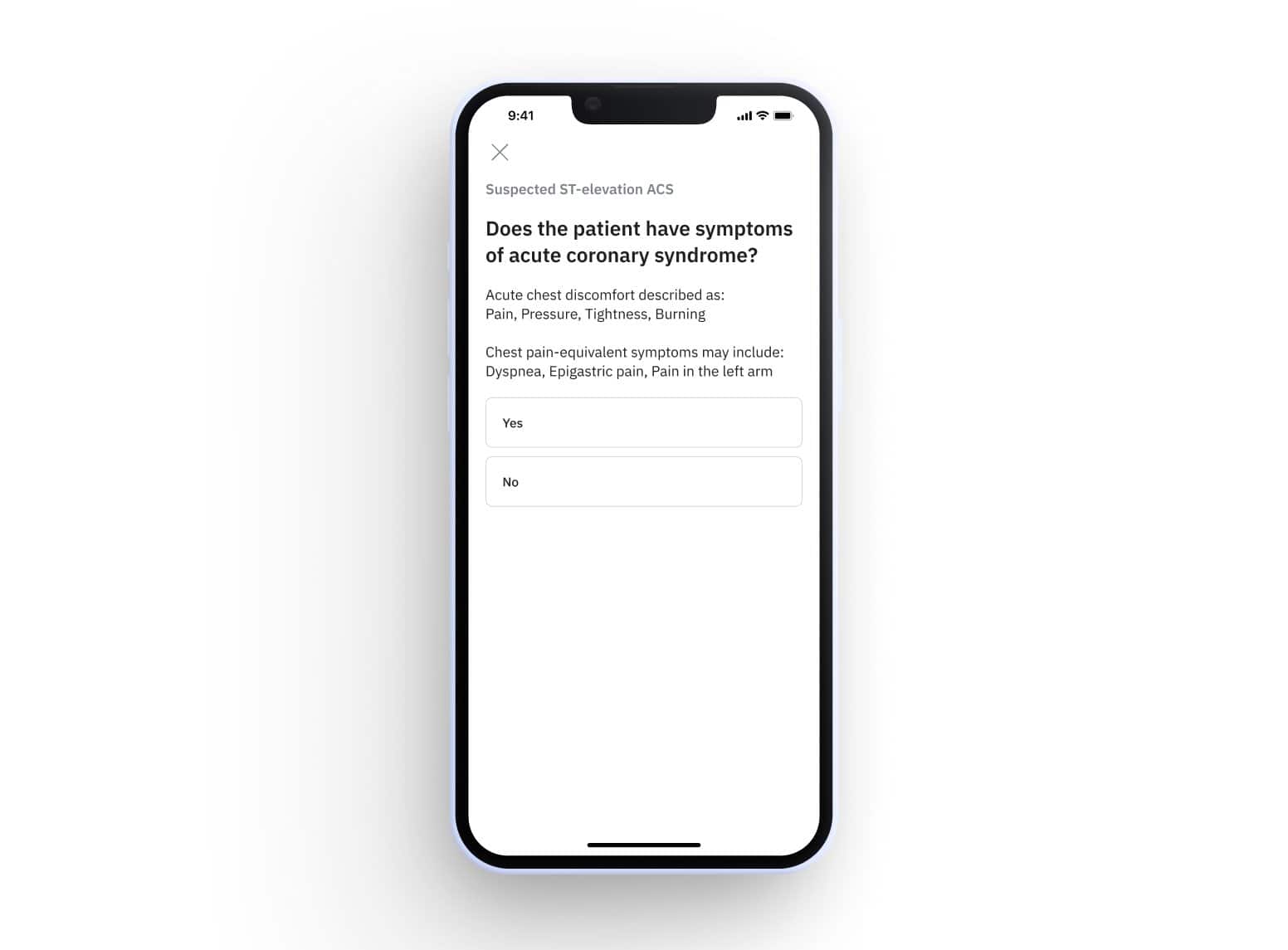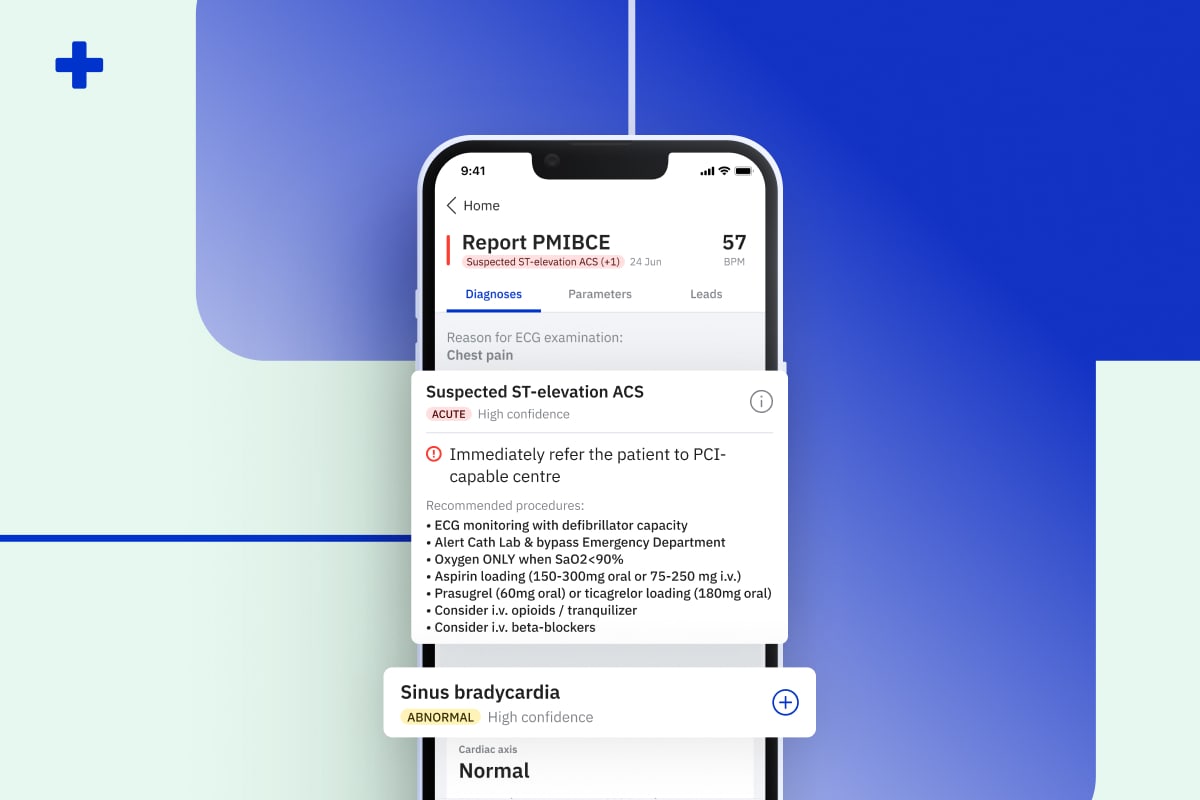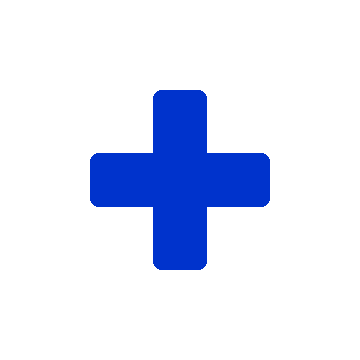There are roughly 30 disease-specific clinical practice guideline documents for cardiovascular diseases. Each is around 150 pages long and gets updated approximately every 2-3 years. This makes it exhaustive for physicians to keep up, especially for generalists in primary care.
With this in mind, we’ve developed one of PMcardio’s core features: Our treatment recommendations engine. Armed with this powerful feature, you’ll no longer need to worry about keeping up with the ever-changing guidelines. You will always be adherent to the most up-to-date version.
In this article, we’ll show you how our patient management recommendations (PMRs) work and what benefits they bring to your everyday practice.
How do PMcardio treatment recommendations work?
After creating an ECG diagnostic report in PMcardio, the app generates a series of ECG diagnosis-specific clinical questions for an appropriate contextual diagnosis of a patient.

For each of the 38 cardiovascular diagnoses that PMcardio supports, there is a decision tree of these clinical questions constructed using the official clinical practice guidelines developed and published by the ESC (European Society of Cardiology).
By answering these questions, you navigate the pathway of the decision tree to the right course of action prescribed by the ESC guidelines.
Combining the ECG diagnostics with these patient parameters, our engine generates personalized patient management recommendations consisting of specific therapeutic strategies that the doctor must follow in each particular patient case. That includes procedures and drugs, complying with the latest drug interactions, and contraindications.
Our engine doesn’t only list the drugs, dosages, and procedures based on the guidelines but also provides information on why we made the suggestions, including warnings.*
*First-level treatment recommendations have been implemented for all diagnoses currently supported by the PMcardio platform.
Read your next ECG with AI
Be part of a future where expert ECG interpretation is smarter, faster, and more accessible. Sign up now and claim your 5 free ECG reports – no credit card needed.
What are the benefits of using PMcardio patient management recommendations?
Now, let’s explore the benefits of having these in-app treatment recommendations always handy in your phone.
1. Always adhere to the most up-to-date guidelines
Keeping up with the guidelines can get overwhelming. After all, only for cardiovascular diseases, there are roughly 4,500 pages of guideline documents!
We wanted to make your life easier. With PMcardio, you will always be compliant with the most up-to-date guidelines. For each of the 38 CVDs that PMcardio supports, you will get the correct cause of action suggested directly through the app.
Just imagine the amount of time it can save you.
2. Triage cardiac patients correctly
When it comes to triaging cardiac patients, there’s a high risk of error due to incorrect evaluation of the severity of the diagnosis.
With the app’s immediate referral recommendations and traffic-light risk-rating system, you will secure accurate patient triage and improve patient referral into secondary care.
3. Streamline patient management decisions & get a valuable second opinion
Having these patient management recommendations in your phone will speed up your patient management decision-making process.
Especially in primary care, where a generalist can often use an opinion of a cardiologist when it comes to cardiac patients. Often there is no cardiologist to consult with at hand.
With PMcardio’s treatment recommendations, you will be more confident and effective in making medical decisions about patients with CVDs. And, even without relying fully on PMcardio for patient management, it can provide an invaluable second pair of eyes.
Over to you
PMcardio’s ECG reports include treatment recommendations based on decision trees that follow the latest guidelines from the European Society of Cardiology (ESC).
By using this feature, you will receive immediate treatment suggestions according to the most up-to-date clinical practice guidelines, already at the first point of contact with the patient – right after you perform an ECG scan.
These recommendations help physicians make informed, timely decisions about patient management, which is especially crucial in cardiac care.







